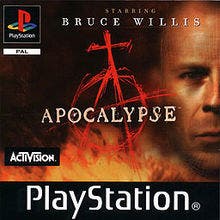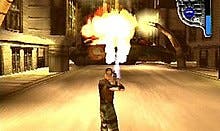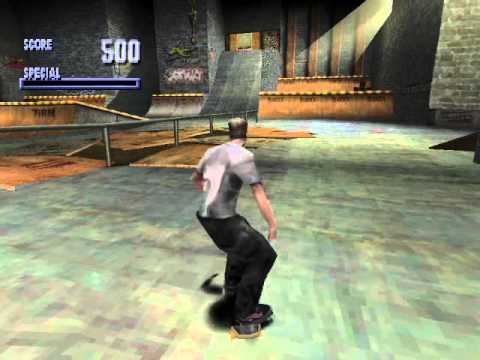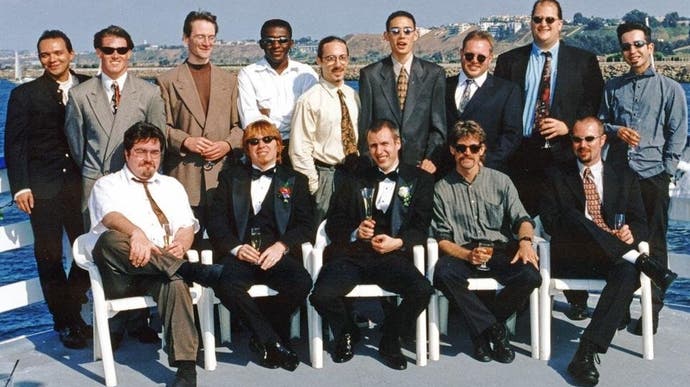How a troubled game starring Bruce Willis led to the skateboarding revolution
Skate or die.
In the late 90s, Activision wasn't the powerhouse it is now. Bobby Kotick's baby was on unsteady ground; the company wasn't sure just how successful the console industry would truly be, and having seen success in PC gaming and bought up big-name licences left, right and centre, it looked on at the burgeoning PlayStation and struggling Saturn with concern. In the midst of all this, Kotick and Activision had the Apocalypse project - already three years in development - and it was stuck in a rut.
Apocalypse was a third person action game which took advantage of the new analogue control system for PlayStation, and featured a star turn from none other than Bruce Willis. Looking back now, the platforming aspects were a litte hit and miss and the voice work - already captured before Neversoft came onboard - was weak and lacked impact.

"The vision for [Apocalypse] was for it to be a 'buddy game', where you would play and Bruce Willis would be your AI partner," says Aaron Cammarata, a level designer on Apocalypse. "There was the possibility of couch co-op, but apparently the team was concerned everyone would just want to play as Bruce Willis, not as his friend". He has a point. However, a second problem soon arose; "The team was having a hard time getting the AI and buddy system to play well, and for the AI to respond in an intelligent way". This was all happening within Activision, and the company decided it didn't want to invest in the area any longer. It began looking for external partners to work with, and just down the highway was Neversoft.
Neversoft had just finished a port of MDK for the PlayStation, so Activision gave the studio the chance to finish Apocalypse with a caveat: it had to be in stores for Christmas 1998. This gave Neversoft just six months. "It had been in development hell for three years, so the decision was to try and get something out, to recoup costs," says Cammarata, who went from working internally at Activision to go work at Neversoft.
It was a good environment to find yourself in. "The coders were focused and delivered results every day. The artists blew the doors off of any system you put in front of them. And the best part is, that it was cultural - everyone was motivated to do better. You wanted to work hard, to make everyone else say 'holy crap!'" Neversoft came together and jammed for six months, managing to meet the deadline. Apocalypse came out in October 1998. Activision was impressed by the effort shown at Neversoft and understandably so.

Apocalypse was ahead of its time - a phrase often overused, but beyond the admittedly average game there were a number of remarkable technical feats. "There's no A for effort in video games." says Cammarata. "It's no trouble getting two characters to animate together. Say, for example, if one character interlocks his fingers for the other to receive a boost upwards. But, what if they're facing the wrong way? What if they're out in the open? What if they're too close to the platform and the models pass through the geometry?" Neversoft found itself tackling the same problems met so well in the Uncharted series, or in the more recent Tomb Raider titles. Apocalypse was ambitious and the ambition paid off.
"[Apocalypse] was a trial by fire, and we learned how to work with each other and how to trust each other. Then when the opportunity came to make something from scratch, we already had a super-deep culture around trust, and about proving your point with fun."
Apocalypse went on to do reasonably well - well enough for Activision to give Neversoft another shot with a different project. "Activision saw us as very reliable, as we saved their bacon with Apocalypse," says Mick West, co-founder of Neversoft and someone known within the industry for working with tight codes on restrictive systems from the 8-Bit days. "They wanted to invest money in a franchise, so they picked us." West saw this as an opportunity for Neversoft to prove itself, and the studio got to work on a demo.

The original tech demo would look familiar. "We used some of the art assets temporarily. But the engine started out exactly the same. We just added bits as needed. There were lots of references in the code to 'Bruce'," says West. Cammarata confirms this: "The name of the code that ran the main character was still 'Cbruce'. the main character was literally Bruce Willis with a machine gun on a skateboard, and we were trying to find the 'soul' of the game." It wasn't long before the team found that soul, but there was much to do in order to work out how tricks would be executed through a controller.
Tony Hawk's Pro Skater was something of a revolution in video games. We'd seen racing games of all kinds and sports games were big business, but capturing the freedom of skateboarding was going to be a challenge. "I started to see the whole world differently," says Cammarata. "My level design sensibilities started overlaying on the real world. I'd start seeing lines, because my brain was fully engaged in how you flow through the space as a skater, how much room a kickflip would take. How fast I'd be going if I did a nosegrind down that railing."
The biggest problem though came when discussing how exactly the many tricks a skater could perform would be pulled off on a controller. " Would it be like a fighting game?" says Cammarata, who found himself in the middle of the debate. "So you'd press, say, square-square-triangle-X to do a kickflip - keying in short sequences. Or maybe a quarter-circle, like a Hadouken? Or would it be chords, like hitting square and left at the same time? One day, the engineers built a version where you could play in a little playground, and switch between those two control schemes, and that's when Tony Hawk was really born."
We have to be thankful that Neversoft took the reins of Apocalypse. Its success meant they went on to spawn one of the best sports franchises in the history of video games. To date, the Tony Hawks franchise has graced twenty different systems, selling millions of units worldwide. Neversoft went on to become one of the juggernauts in the industry, creating some of the best games in the early years of the PlayStation brand. "We just knew what made a game fun," says West. "So we just tried to get in as much as possible in the time available."
